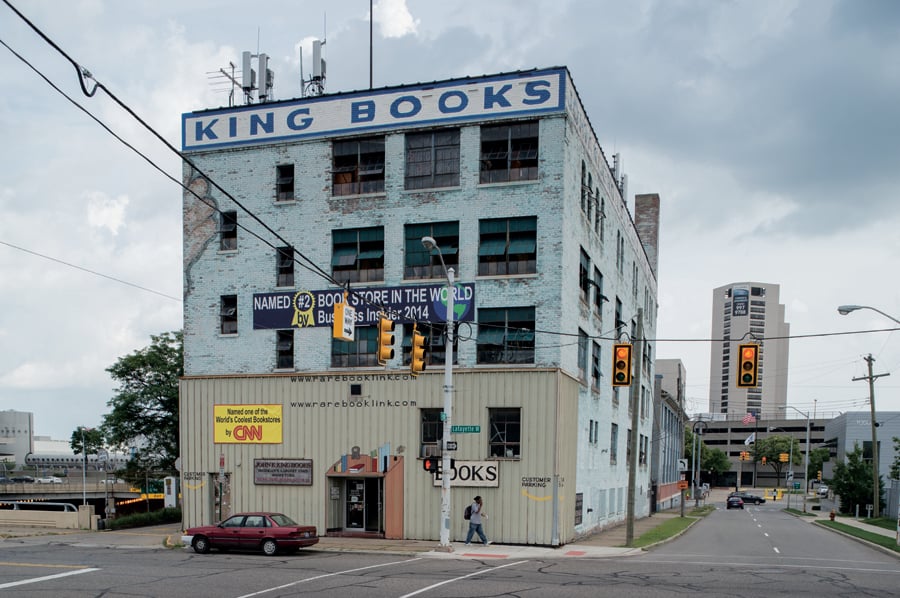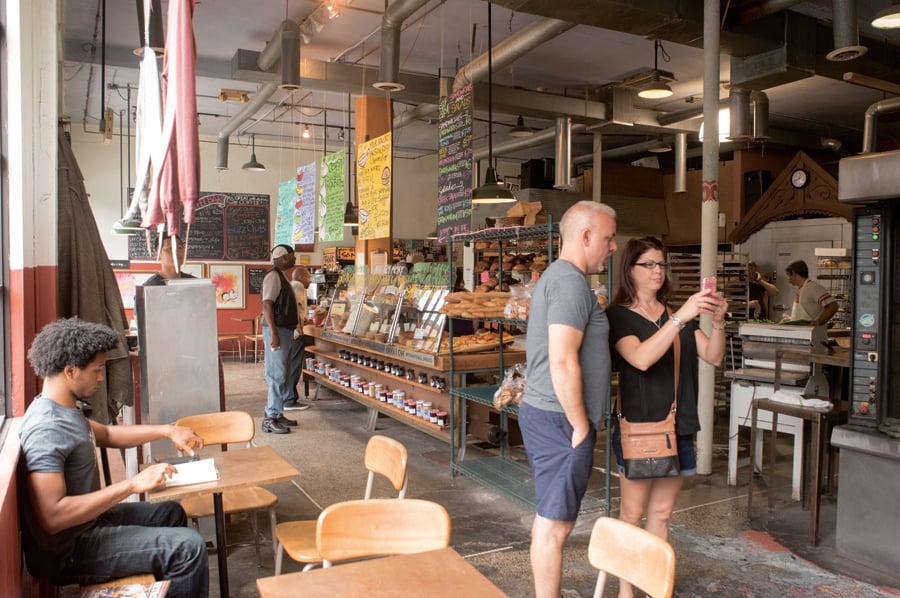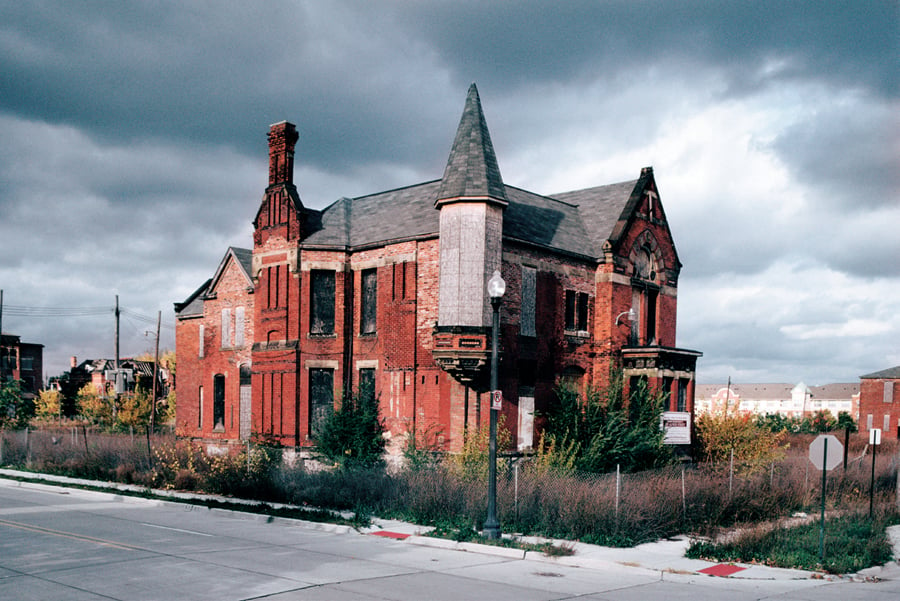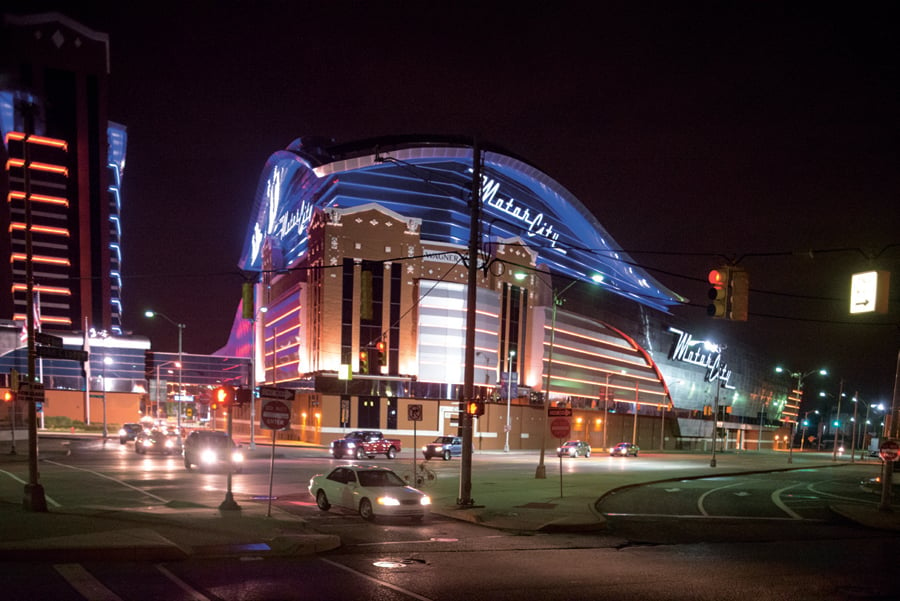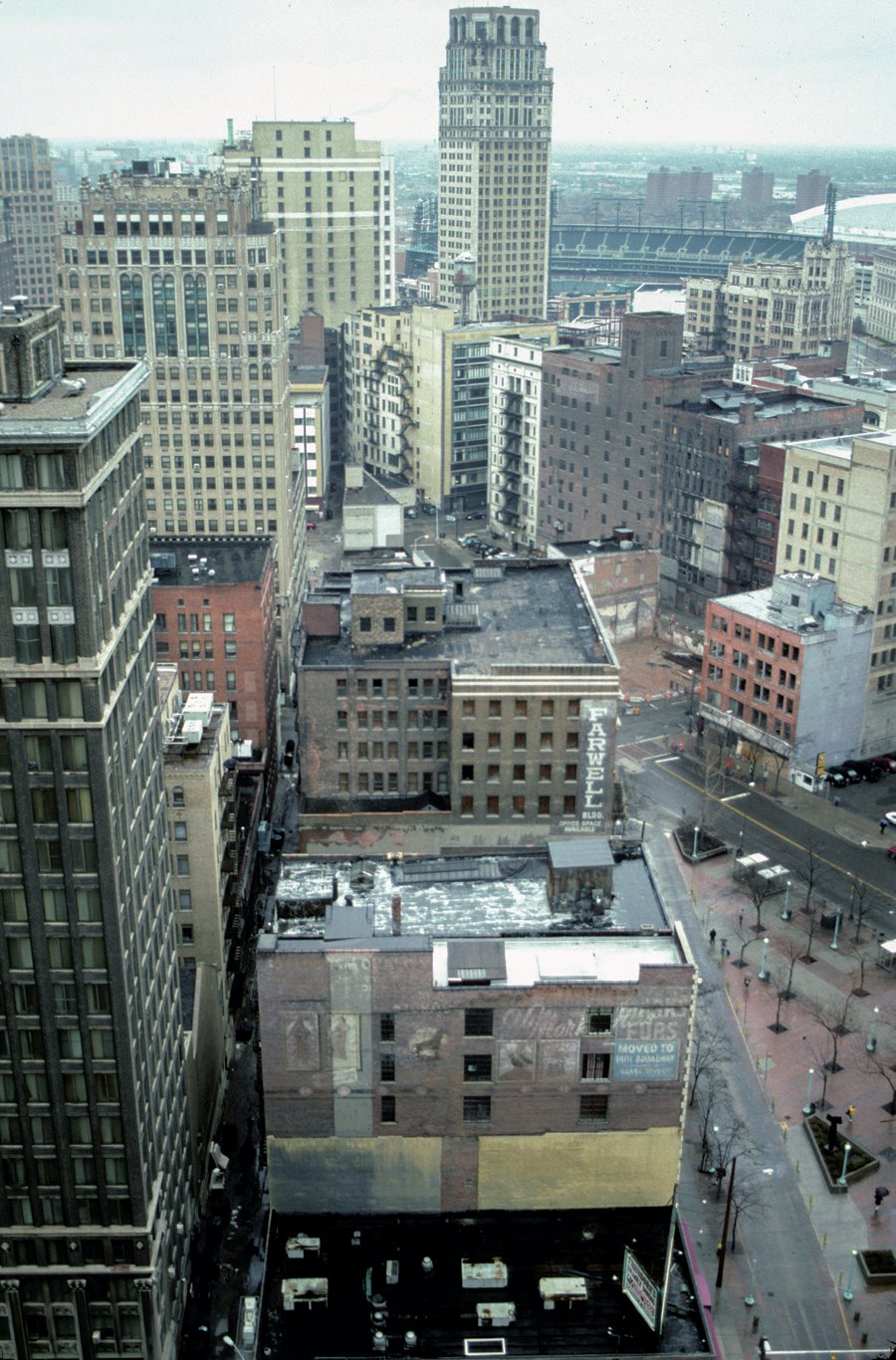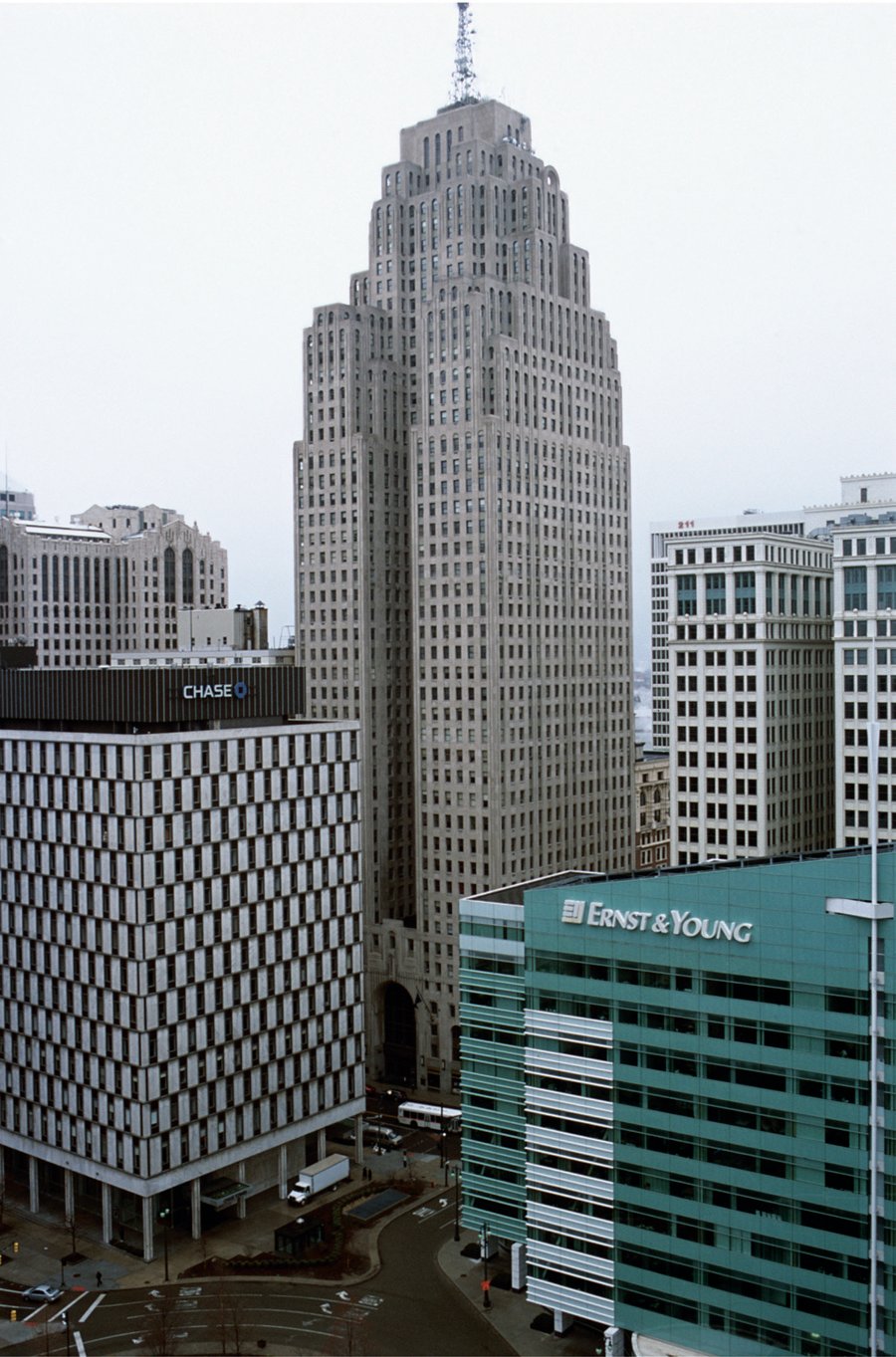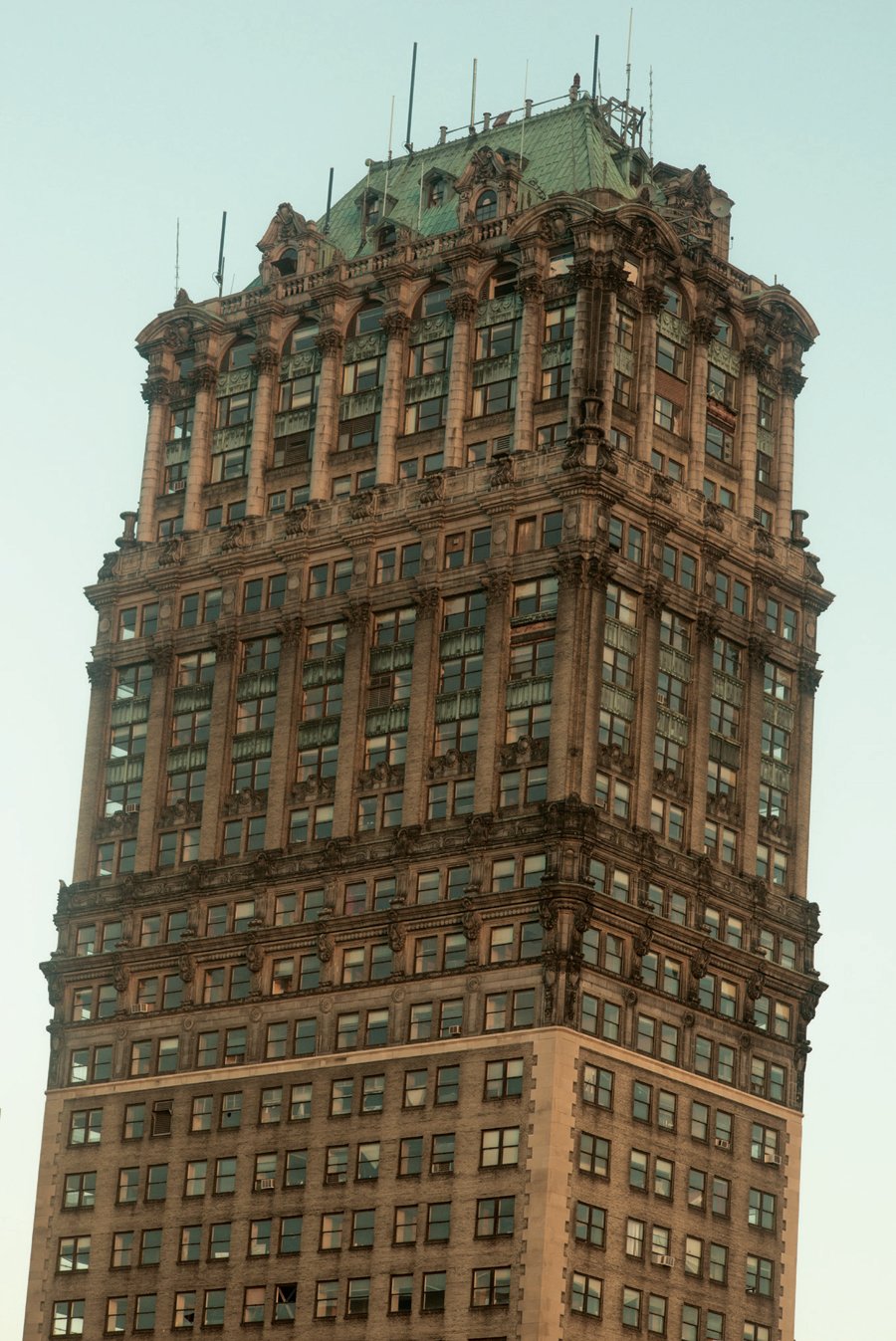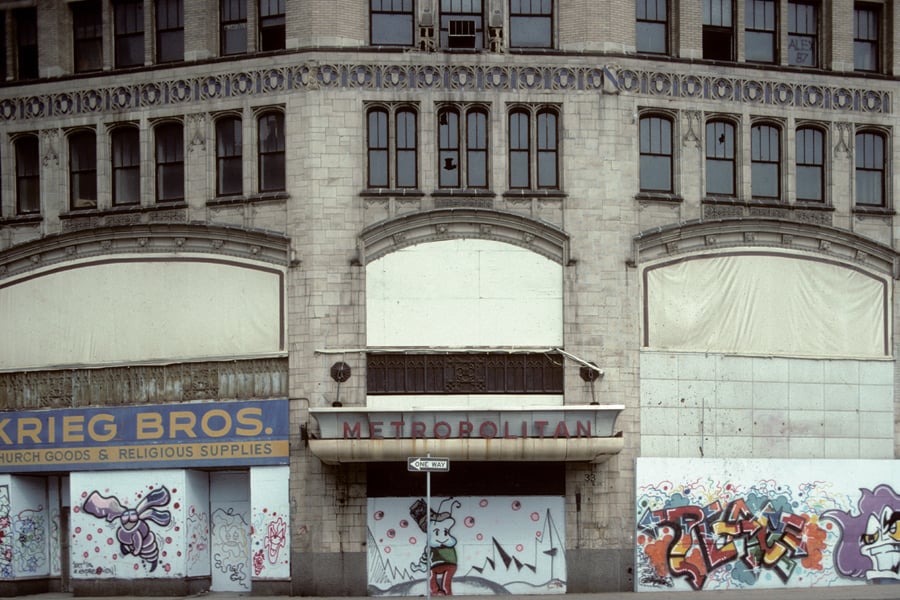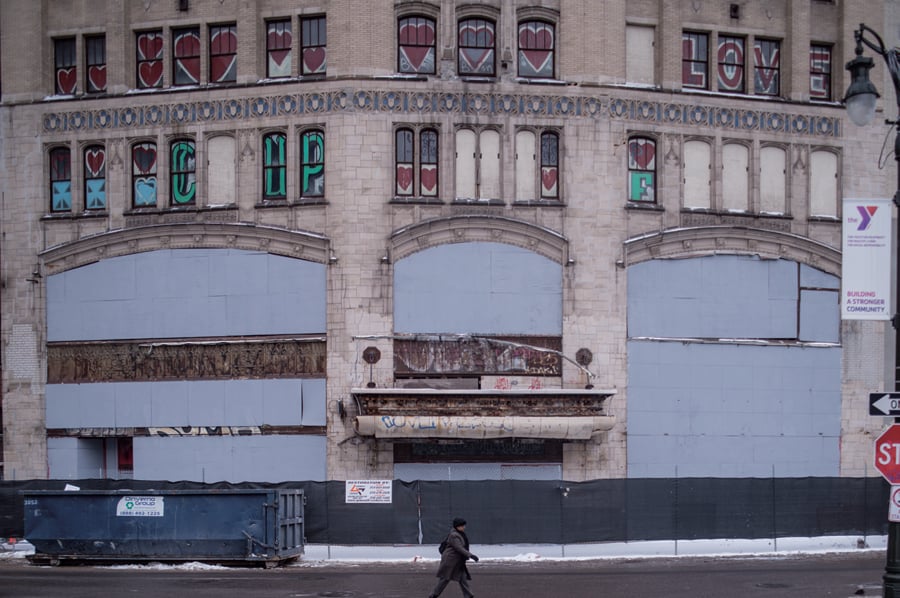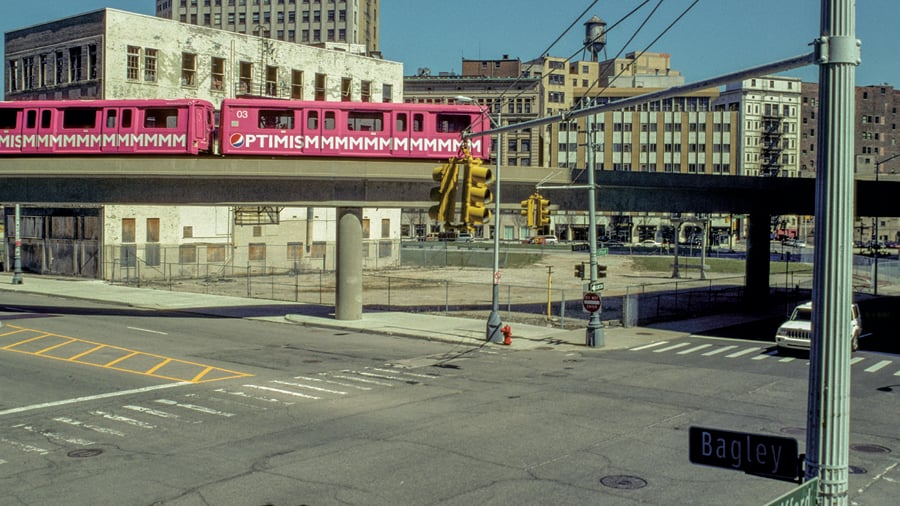
April 24, 2017
American Acropolis: The End of an Era in Detroit
Award-winning photographer Camilo Vergara recounts his memories of Detroit, a city that “has lost so much of the mystery and strangeness of its ruins” as to be almost unrecognizable.
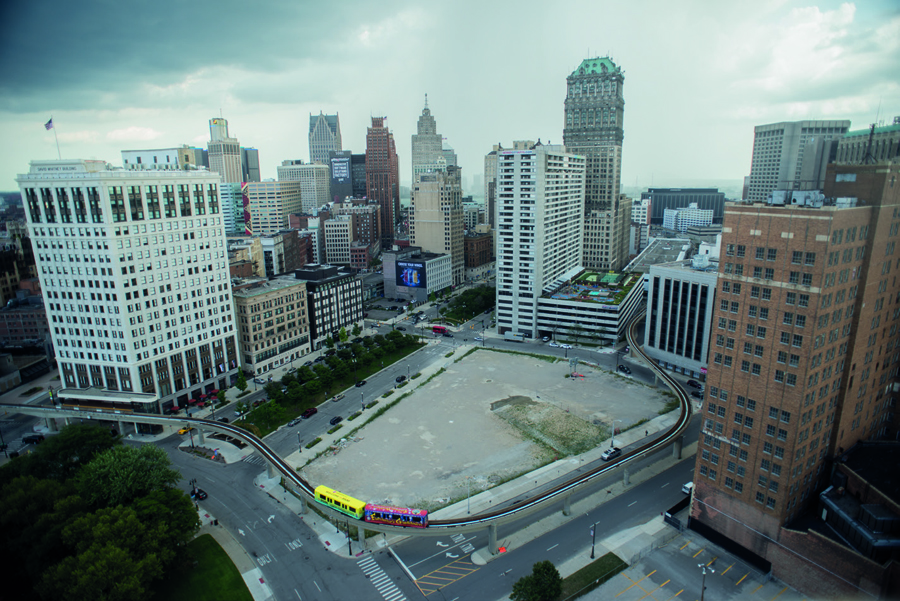
I propose that as a tonic for our imagination. . .as a call for renewal, as a place within our national memory, a dozen city blocks of pre-Depression skyscrapers be stabilized and left standing as ruins: an American Acropolis. We could transform the nearly 100 troubled buildings into a grand national historic park of play and wonder.
—Camilo José Vergara, New York Times, December 10, 1995
. . .Vergara is not immune to the pleasures and instruction found in decay . . .In 1995, he proposed that Detroit set aside twelve blocks downtown as a “skyscraper ruins park.” With almost a quarter of these buildings ‘nearly empty and several in advanced states of ruin,”’ he believed a radical rethinking of the area was needed. ‘The place that invented planned obsolescence has itself become obsolescent,’ he wrote. Had the authorities heeded his suggestion instead of scorning it, they might have created a tourist attraction to rival New York’s High Line.
—Richard Woodward, “Disaster Photography: When Is Documentary Exploitation?”
Art News, February 6, 2013
Until two decades ago an area of three blocks surrounding Grand Circus Park, once the city’s business center, contained the world’s largest concentration of abandoned skyscrapers. Built mostly before the Great Depression, these grand buildings, once symbols of progress and ambition, were prosperous until the mid-1950s, when they fell out of fashion, deteriorated, and were left to the elements. The sheer number and size of these abandoned structures, rising within a subsequently near-lifeless environment, turned Detroit’s old downtown into a surreal place. In the early 1990s, these behemoths became the dregs of history, enormous shadows lined up along deep canyons. Their awesome presence convinced me that they should be preserved as an American Acropolis, a ruined skyscraper park. Even now, for me, Detroit is a unique and much needed place of peregrination that renews my spirit, a realm where I can escape the prison of capitalism.
Anchoring the unique park that I envisioned was the huge Hudson’s Department Store, occupying an entire city block, the second-largest such store in the nation, a massive, misshapen fortress that had grown through a series of asymmetrical additions. However, Hudson’s was imploded in 1998 as Detroit mayor Dennis Archer proclaimed, “Let the Future Begin.” There was also the Book Cadillac Hotel, which once rivaled New York’s Waldorf Astoria in elegance. I once explored its darkened Florentine grand ballroom, the huge chandeliers still in place but the floor covered with debris. The Book Cadillac has now been restored as an apartment building and Westin Hotel. The Statler Hilton Hotel, where Franklin Delano Roosevelt stayed, was demolished in 2005 to make downtown attractive for the 2006 Super Bowl. Among the last remaining abandoned skyscrapers is the gritty Book Tower, its green roof favored by peregrine falcons for nesting and by cell phone companies for their antennas.
People willing to visit a ruined skyscraper had to search the perimeter for an entrance, sometimes a plywood-covered hole in the wall. Climbing over piles of trash leading to dark rooms, they would look for an unblocked set of stairs to climb to the roof. Ascending the stairs, they would be put on guard by the masses of debris, old mattresses and sleeping bags, pigeons flying overhead, water dripping from the ceiling, occasional homeless men, and the expectation of dangerous encounters. More recently, due to heightened security, it has become almost impossible to enter these buildings.
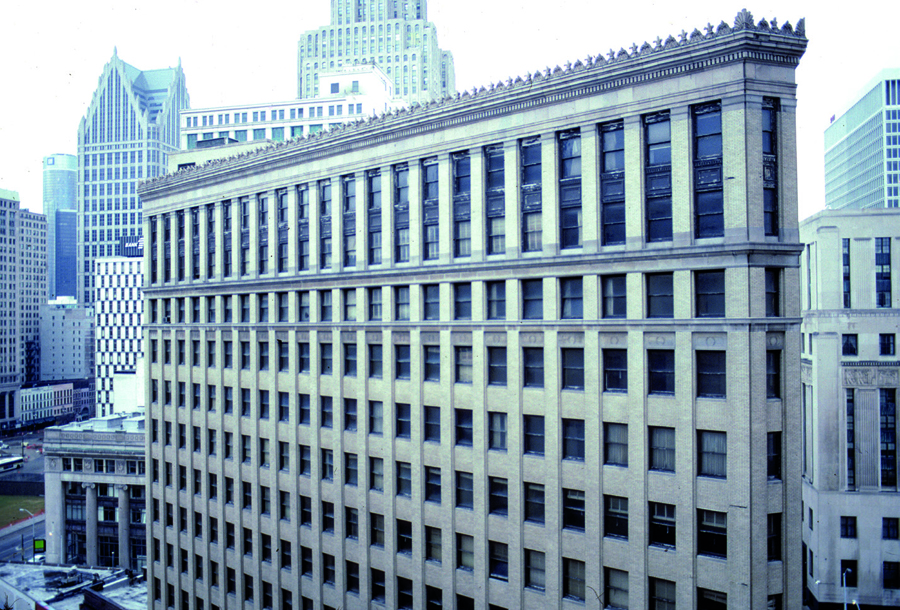
Left with most of their contents intact, the vacant buildings were time capsules of the Motown of half a century ago: storehouses of people’s dental and medical histories, divorce papers, tax forms, and real estate investments. Inside were beauty salons adorned with pictures of popular hairstyles and travel agencies with fading posters of warmer destinations. One could peek into a dozen dentists’ offices with their drills, dental chairs, and file cabinets covered with fallen plaster. The office of Jessie Willie, the elderly caretaker at the David Broderick Tower, was decorated with objects that former tenants had left behind, including an idyllic picture of Portofino.
From the roofs of the skyscrapers one can see a great city spreading far to the north with the wide radial avenues meeting the horizon, the slow Detroit River to the south, and the Ambassador Bridge to Canada to the west. I often tagged along with Peter Zeiler, a planner who worked for the Downtown Development Authority and had access to the vacant buildings. Peter carried a machete to cut down trees growing on the roofs, believing that vegetation would discourage investors. I, on the other hand, hoped for nature to take over, creating many secret gardens. Green moss would spread, frogs would populate the pools of accumulated water, and the graceful alder trees and cell phone antennas would become a thick forest. Surely owls, terns, and geese would follow, and storks would come to eat the frogs. On summer nights the skies would fill with bats and swallows.
On the ground, nine vintage trams imported from Portugal and Switzerland, part of a 1976 bicentennial project, began operating within a ghost town atmosphere. Until 2003, the tinkling of the trams’ bells filled the air as they moved from their station on Washington Boulevard toward the Renaissance Center and back again in a strange ritual. The tram cars were colorful, charming, and mostly empty. They bore the names of exotic cities such as Lisbon, Montreaux, and Vevey. Watching them inch past the derelict grey skyscrapers, along the vacant streets, felt like a hallucination. These trams that once gave life to the ruins have been forgotten along with other perceived failures of the Coleman Young era. Now, the People Mover, a clean, screechy, well-lit monorail, circles downtown. It is mostly empty at night, throwing light at the dark hulks of ruins as it glides by. The sides of the cars carry advertisements, such as the one in 2009 with the Pepsi symbol followed by the word OPTIMISMMMMMMMMMMMM in giant letters against a pink background.

Late in the last century, downtown Detroit became a sports and gambling center with new stadiums and casinos. Suburban families discovered that the city could be a fun place to watch baseball and hockey games, throw tailgate parties, attend conventions, and enjoy the theater. Although Detroit’s population is seventy-nine percent African American, on game days the downtown population is predominantly white.
It was once common to hear members of the African American elite complain angrily that whites had drained capital out of the city, leaving behind derelict buildings that city residents were expected to maintain. They asked, “If people in the suburbs liked these buildings so much, why didn’t they take them with them?” Sandra Hines, a community activist, called Hudson’s a “significant and magical store,” adding that blacks, though, “unless they were very light skinned, could not aspire to become a doorman or elevator operator; it wasn’t for us.” Arthur Johnson, a vice president of Wayne State University, felt no love for the booming city that had excluded him in his youth. He told me, “I wasn’t in the robust thriving Detroit of the 1950s.” Many other black leaders feel the same.
Nowadays, Detroit’s downtown blight has been greatly diminished. People’s Outfitters, a once-celebrated then abandoned Albert Kahn building, has been replaced by a multilevel parking garage. The site of the old Statler Hilton is a vacant lot, and Hudson’s footprint is a field of concrete above an underground parking garage. The Metropolitan, 35 United Artists, Book, and Wurlitzer buildings and many empty storefronts, however, still remind us of the abandonment that was once the norm. Several survivors have been rehabilitated and made into apartment buildings by members of a new generation who appreciate their craftsmanship and design. The CompuServe Building, now the head- quarters of Quicken Loans, together with the Ernst and Young Building, represent something different—modern, glitzy high rises.
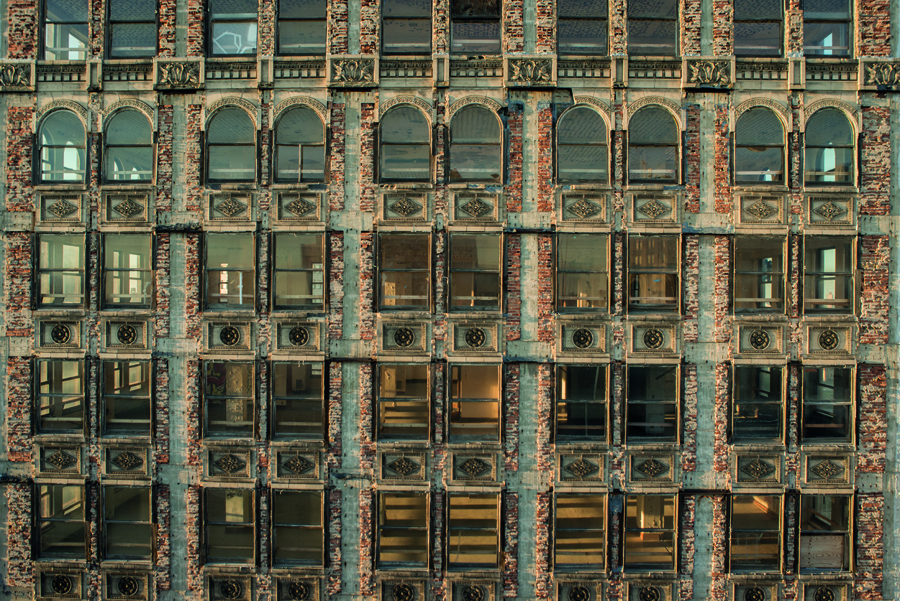
Admittedly, allowing the old downtown to safely descend into further ruin would have been expensive, requiring frequent inspections and maintenance. Unlike ancient ruins that were built brick upon brick or stone upon stone and can last for thousands of years, modern ruins are supported by steel armatures that can rust, and water infiltration will corrode the clips that hold the cladding. When water freezes between the cladding and frame, the resulting expansion loosens the coverings and they collapse. Yet as preservationist Daniel Bluestone has observed, “There is something definitive and authentic about these places….You can literally see the play of time on those surfaces.”
I was one of the few who loved the “enchanted world” of derelict skyscrapers. This caused me to be characterized as an outsider, an aesthete. My proposal for a ruins park—the core of the old downtown preserved as an acropolis—involved far less than one percent of the city’s surface. More than the cost of preserving the ruins, the chie criticism of my proposal was its perceived attempt to reduce Detroit to a hopeless reminder of its former greatness. As Wayne State University planner Gary Sands put it in 1997: “The very concept that this city should have produced a ‘magnificent ruin’ that others would come to marvel at is considered to be an embarrassment to city residents. After all, Detroit prides itself on producing things that are useful and stylish, not things that are abandoned and decayed.” It took more than a decade for the beauty of derelict Motown to be more widely acknowledged, first in Europe and later, begrudgingly, as “ruin porn” in the United States. But by then the ruins park had been reduced by demolition and rebuilding.
Downtown has lost so much of the mystery and strangeness of its ruins that I hardly recognize it. Yet in the 1990s I was there walking the streets and alleys, looking for ways to enter vacant buildings with names like Wurlitzer, Lafayette, and David Stott while trying to avoid being mugged. Sometimes, though, I believe that the whole place was the creation of my imagination.
This text is excerpted from Camilo Vergara’s book Detroit Is No Dry Bones, courtesy University of Michigan Press.









